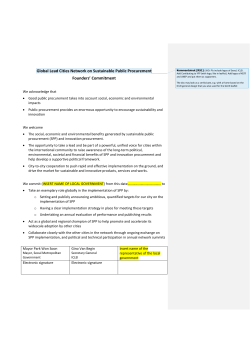
Why is the gap between APP and SPP growing? It is now
Why is the gap between APP and SPP growing? It is now just over a year since two new pig price series were introduced to replace the long-running DAPP. Like the DAPP, the APP provides an average price for all GB pigs slaughtered during the week but, unlike the DAPP, prices are collected from the sellers of pigs. While the APP covers all pigs, the SPP excludes those for which a premium is paid based on the production system or breed which they come from. The SPP is collected from processors, as was the case with the DAPP, with all of the major GB slaughterhouses supplying prices. Given that the APP includes premium pigs, it is unsurprising that it is higher than the SPP. Analysis of the data behind the two series confirms that they are largely consistent with one another. Therefore, the gap between the two prices accurately reflects the influence of including premium pigs on the average price. The size of that gap has risen over time. Last April, when the series were first introduced, it was around 2p/kg. However, since the turn of the year, the gap has often been closer to 4p/kg. So why has this happened? However, industry reports also suggest that the range of prices paid for standard pigs has been an increasing. This is partly because spot market prices, which are more exposed to the wider EU market, have reportedly experienced bigger falls than contract prices. In addition, with many contracts having previously been linked to the DAPP, there is now reported to be a wider range of pricing mechanisms in use. Analysis of data from the SPP sample confirms that there now appears to be a greater spread of prices being paid. In the first week of the SPP in April 2014, less than one in ten pigs sold were at a price more than 5% from the average and very few were more than 10% above or below the SPP. By April 2015, the distribution of prices was different, with a wider spread around the SPP. Nearly a quarter of pigs sold at prices more than 5% from the average, with around one in six receiving prices at least 10% away from the SPP. Proportion of pigs in SPP sample at different distances from SPP Gap between GB APP and GB SPP (EU-specification) 100% 4.5 90% 4.0 80% 70% 3.5 April 2014 April 2015 60% 3.0 p/kg dw price relative to standard pigs. In part this is probably an indication that the premiums being paid have increased. 50% 2.5 40% 2.0 30% 1.5 20% 1.0 10% 0.5 0% 0.0 Apr- May- Jun- Jul-14 Aug- Sep- Oct14 14 14 14 14 14 Under 5% Nov- Dec- Jan14 14 15 Feb- Mar15 15 Apr15 5-10% 10-15% Over 15% Source: AHDB Market Intelligence Source: AHDB Market Intelligence There are two main reasons why the gap may have increased, although they are not mutually exclusive. First, the proportion of premium pigs could have risen. If this was the case, they would have a bigger influence on the APP, which would increase while the SPP would be unchanged. Secondly, the difference between the average price of ‘standard’ pigs and the average price of premium pigs could have grown. To test if the proportion of premium pigs has risen over time, we can look at the proportion of total GB pig slaughterings included in the SPP sample. In the first three months of the SPP, it covered 51% of the GB kill. In early 2015, the share had fallen slightly to 50%. That suggests there may have been a modest increase in the share of pigs attracting a premium. However, the shift would be too small to account for much of the observed increase in the gap between APP and SPP. Therefore, it seems that the main reason for the increased price gap is that premium pigs are now attracting a higher This shift in the distribution of standard pig prices will have contributed to the increase in the gap between them and the average price for premium pigs. Although there have no doubt been some changes to contract terms for premium pigs, these don’t appear to have had as much impact on average prices as those for standard pigs. One final factor has also had a small part to play in the gap between APP and SPP expanding. Since the start of this year, the difference between average carcase weights in the SPP and APP samples has grown. During 2014, the difference averaged around 500g, although it did rise for a period over the summer. Since the start of 2015, the gap has averaged over 1kg. This suggests that there have been more standard pigs at the heavy end of the scale and some will have fallen outside contract specifications and attracted lower prices. Although only modest, the increase in the gap between the APP and SPP clearly results from some important changes in the GB pig market. It will be interesting to monitor how it develops from now on and what it tells us about the market.
© Copyright 2025









